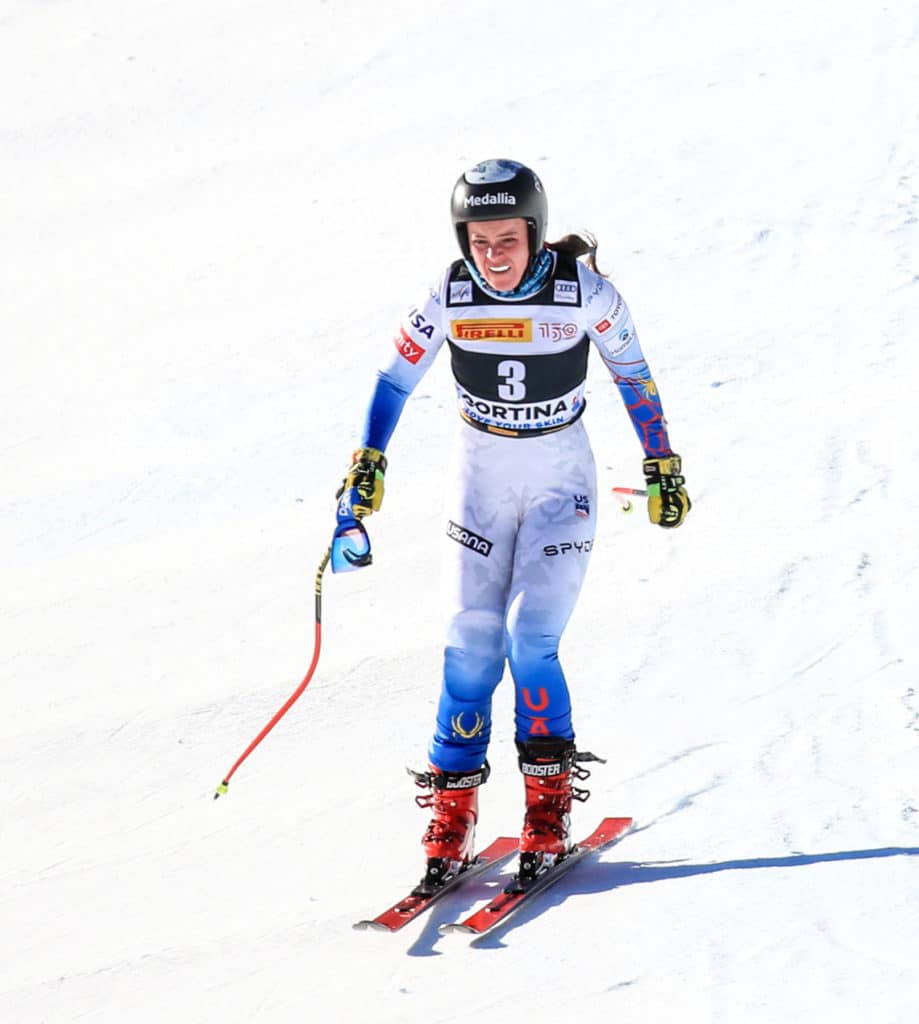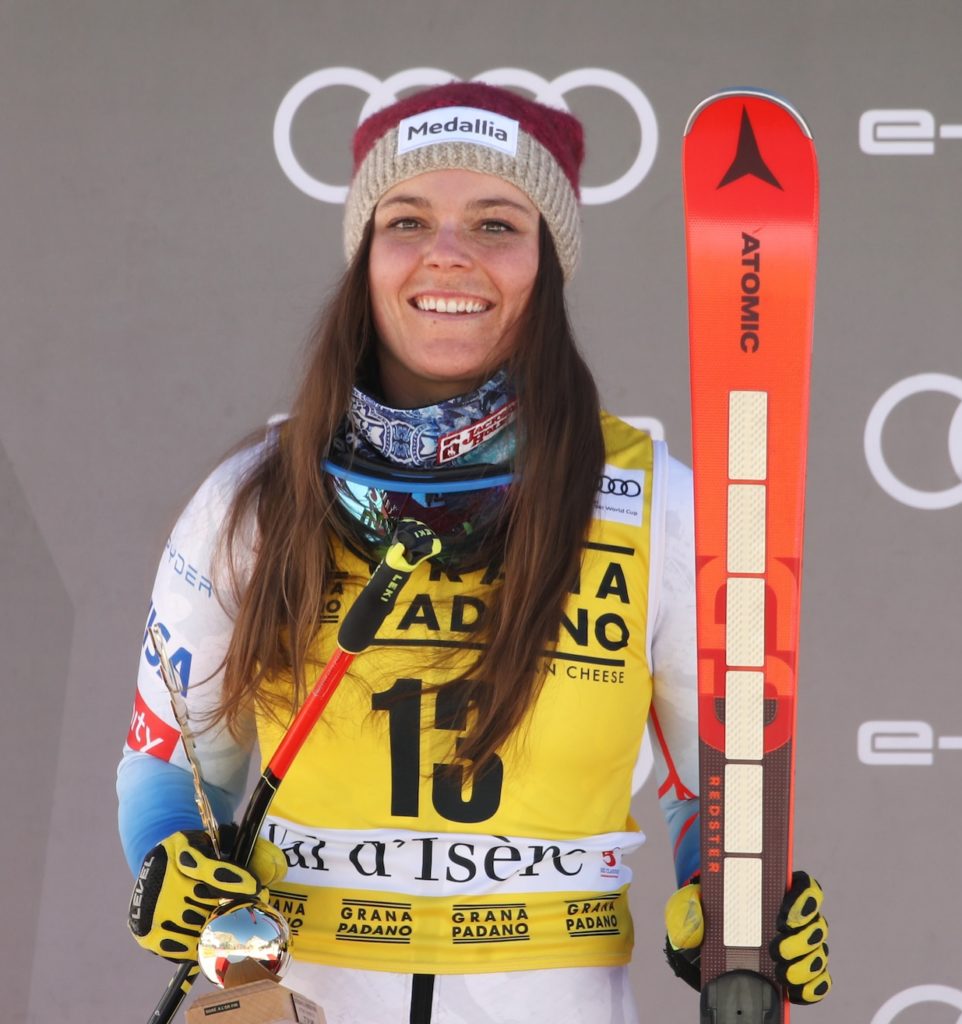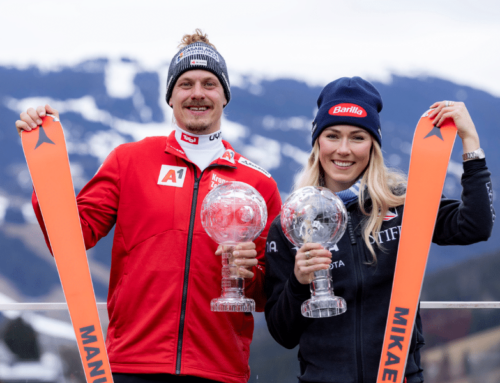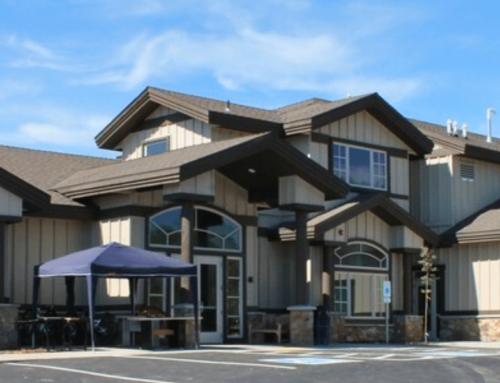America’s top downhiller eyeing a September return to snow
After Breezy Johnson awoke from knee surgery this February, she watched the Beijing Olympic opening ceremony on TV. It was not how she had planned to experience it.
The 26-year-old from Jackson, WY, was riding the greatest success wave (so far) of her career, ranked No. 2 in the World Cup downhill standings after finishing second (to Italy’s Sofia Goggia) in the three opening downhill races. Then, after a pair of training crashes in January, her world came to a halt.

“I basically had a bad cartilage lesion when I crashed in Cortina. I tore a large chunk of cartilage off of my knee. I actually tore my ACL earlier in January and was succeeding in skiing without it,” Johnson said.
After the first crash, Johnson opted out of the upcoming speed events in Zauchensee, Austria. Feeling recuperated and ready to race a week later, she finished fourth in the first downhill training run in Cortina d’Ampezzo, Italy. Then she crashed during the second training run, tearing the meniscal roots in the same (her right) knee.
“The only reason I didn’t talk about tearing my ACL when I did it is that I feel there’s a lot of judgment in our sport about ACL tears and re-tears,” she says. “People may think, ‘do you really think you can do this without an ACL?’ I told myself yes. I was going to try to compete without it. I did compete without it. What people are doing and what people are capable of is somewhat their business. Remember, you’re not in my body. You’re not in my shoes.”
Facing a Tough Reality
After the crash, Johnson got up and skied down on her own. She could have participated in the Olympics but opted out because participation was not her goal.
“I stepped out when I felt my knee could no longer win a medal, not when I felt I could no longer do it,” she says.
So, rather than competing in Beijing as one of America’s best medal hopefuls, Johnson underwent surgery for right knee ACL reconstruction, an osteochondral allograft (cartilage replacement from a cadaver) and a meniscus root repair on Feb. 3 in Vail. She spent the next six weeks on crutches, non-weight-bearing, and has been working as hard as possible – physically and mentally – toward an eight-month full recovery timeline.
Watching the Olympics on TV
“The Olympics was really hard,” she says. “There was a moment [watching] the super G where the camera panned to my PT from my last two injuries. That moment was really tough. I was like, this isn’t supposed to be how it ends. I was supposed to be there, celebrating with her, getting through everything we’ve been through in the last few years, and not ending this way. But this isn’t the movies. You aren’t guaranteed a happy ending. You can work toward it and try for it and say, I’ll have it again in four years, but the reality is, you have to do what you can to make yourself as happy as you can.”
Johnson has fought back from previous injuries to perform better than ever.
After starting in the World Cup in 2015, she quickly worked her way up the ranks and had notched a couple of top 10s in 2016-17 before crashing in the World Cup Finals and fracturing the tibial plateau in her left leg. Undeterred, she charged to 10th place in the opening DH race in Lake Louise the following season and nabbed what were at the time her career-best Cup results (fourth and eighth) leading into the 2018 Olympics. There, she finished seventh in the downhill.
In September 2018, Johnson tore her right ACL while training in Chile and missed the entire following season. Just as she was on the tail end of her recovery and about to stage her next comeback, she tore the MCL and PCL in her left knee in June 2019. She still charged back to the World Cup in January 2020, landing another pair of top-five results before the season ended prematurely due to the COVID-19 pandemic. Over the next two seasons, Johnson has etched a firm place among the world’s top downhill skiers. Since December 2020, she podiumed in every World Cup downhill race she finished leading up to her injury.
Return to the Top
“I am a good healer,” she admits. “I wish I didn’t know that quite so well.”
Although it’s been a challenge, all signs point to another successful recovery so far following Johnson’s latest injury.

“Mentally, obviously, I’ve been struggling. Physically, it’s coming along,” she says. “Our goal is to get back on snow in September. We’re on track right now, working really hard in the gym all the time.”
Johnson has spent the spring in Park City. This May, a typical day for the downhiller involves a cardio workout around 7:30 a.m., followed by physical therapy, lunch and an afternoon workout that often lasts until 5 p.m.
Although she is building back her strength, adding 10 pounds a week to her squat, she said she was back-squatting more than 300 pounds last summer and is concerned that she hasn’t yet gotten back to 200.
“You’re confronted with exactly how far away you are because you’re like, normally I squat this,” she says. “You just want your body to perform to the level you expect, and it can’t right now. That’s really hard. You have to meet certain benchmark criteria with the US Ski Team, so 90 percent of my previous personal best. That’s what I need to accomplish sometime between now and September.”
Overcoming the Mental Challenge Injury
Downtime is when Johnson’s anxiety creeps in, but she’s grateful for her support team and feels better as long as she’s moving forward or simply moving.
“I’m not going to pretend to be in a rosy state mentally, but when I’m in the gym working with people, I’m OK,” she says. “I really appreciate the people working really hard to make it as good as it can be.”
Spending time with friends and watching The Great British Bake Off has helped a little too.
“I’ve watched it way too many times,” she says. “It’s a very happy show that makes you feel like the world is going to be OK.”
Remembering the transcendent sensation of charging downhill – and the dreams that come with it – is what keeps Johnson going.
“I love the feeling of racing,” she says. “That’s still worth it. It’s been a lifelong dream of mine to go for the downhill globe. I’m not giving up on that.”
Related articles





















